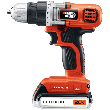Have you ever been faced with the problem of repairing a hole that was put into your wall? Many people believe that for the large holes at least, this is a complicated and difficult task. That this is a task that a contractor needs to be called in, in order complete. Luckily, this is not something that is as difficult as many people may think. All that someone needs to do is gather a few items, and have some time that can be devoted to the task.
Items needed:
- Sandpaper
- Adhesive fiberglass tape
- Drywall compound (also known as "mud")
- Sheetrock
- Hair dryer (optional)
- Paint (matched to existing paint)
- Paint brush
- Sanding block, or sanding tool.
- Drywall saw or knife
- Drywall screws
- Screwdriver
After you have completed gathering these items, and you are ready to begin, choose a day or time to begin. Use the following checklist and you are going to be able to have a wall that is as good as new.
- You are going to need to make sure that the hole in the sheetrock is cleaned and prepped for repair. Use your drywall saw or knife to remove the damaged portion of wall. In fact, you could or should probably do this step before beginning anything else, since you could take a small piece of the painted sheetrock with you to find matching paint.
- Take a piece of the sheetrock and screw the backing board (the scrap board). The board is going to act as a support structure for the patch. Apply some of the adhesive to the board to help keep it in place as your patch.
- After you have the patch in place, take some of your "mud" and apply a coat over the entire patch, and about 5 to 7 inches past the edges to help provide extra support to the patch. Apply this coat in as even of a manner as possible. After you have done this, you are going to need to wait for the mud to dry completely, which can take up to twelve hours to do. One method that you can use to speed this up, you can use that hair dryer mentioned in the items list. Considering that this is going to dry the mud much quicker, you can be ready to go to the next step in as little as 30 minutes.
- Take some of the sandpaper and your sanding tool to smooth out the mud. You want the area as smooth as possible prior to painting. If you have found yourself with spots that are thinned out too much, simply repeat step three and four as needed.
- Paint your wall. You can now paint your wall, and if you have done all the steps properly, then you are not going to be able to see any of the damaged wall anymore. In fact, you should not even be able to see where there was any damage at all. All that you have left to do now is to clean up.
Author Bio
Doris Donnerman
Doris is a jack of all trades, writing on a variety of topics. Her articles have helped enlighten and entertain thousands over the years. Learn more about Doris...
Keep Ants at Bay without Using Harmful Insecticides
You probably already have a few simple ingredients in your kitchen to use as a natural ant repellent. The next time you ...
Discover More
Luscious Lemon Bars
Lemon bars are a wonderfully easy, and tasty, desert that can be appropriate for any occasion. Try this recipe next time ...
Discover More
Chalky White Toenails
If you begin to notice that your toenails are turning yellow or have a chalky white texture, you may have a toenail ...
Discover More
More Home Improvement Tips
Glazing a Wall
If you are looking to decorate your home and don't want to go with the traditional painting or wallpaper, what are your ...
Discover More
Repairing Cracked Plaster
It is a sad fact of life that plaster walls will become cracked, or have some fairly nasty holes after a while. Repairing ...
Discover More
Hanging Pictures with Style
Everyone can hang pictures on their wall, but not everyone can do it with style. Surprisingly hanging pictures with style ...
Discover More

Comments